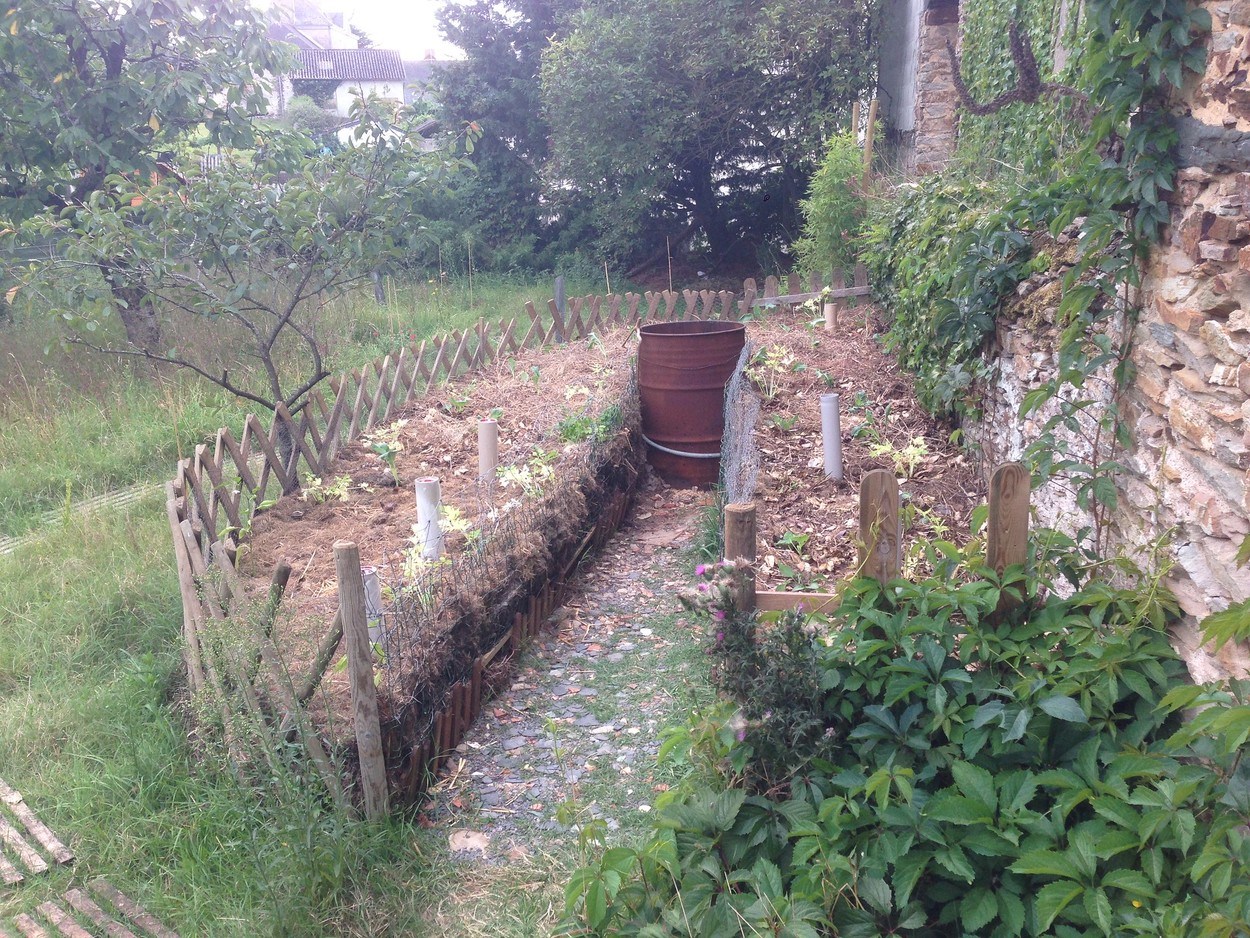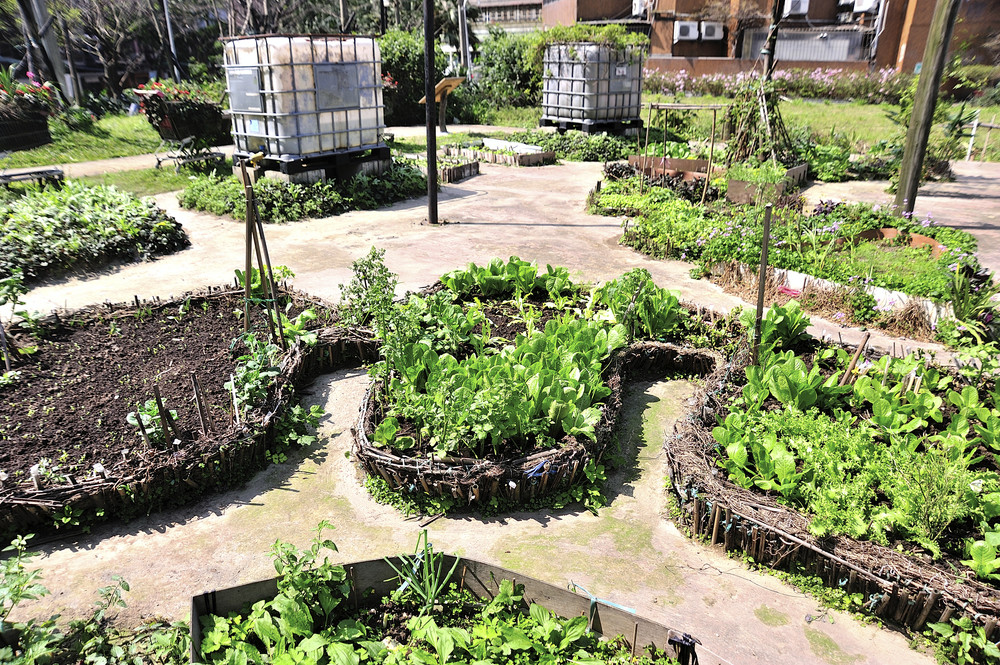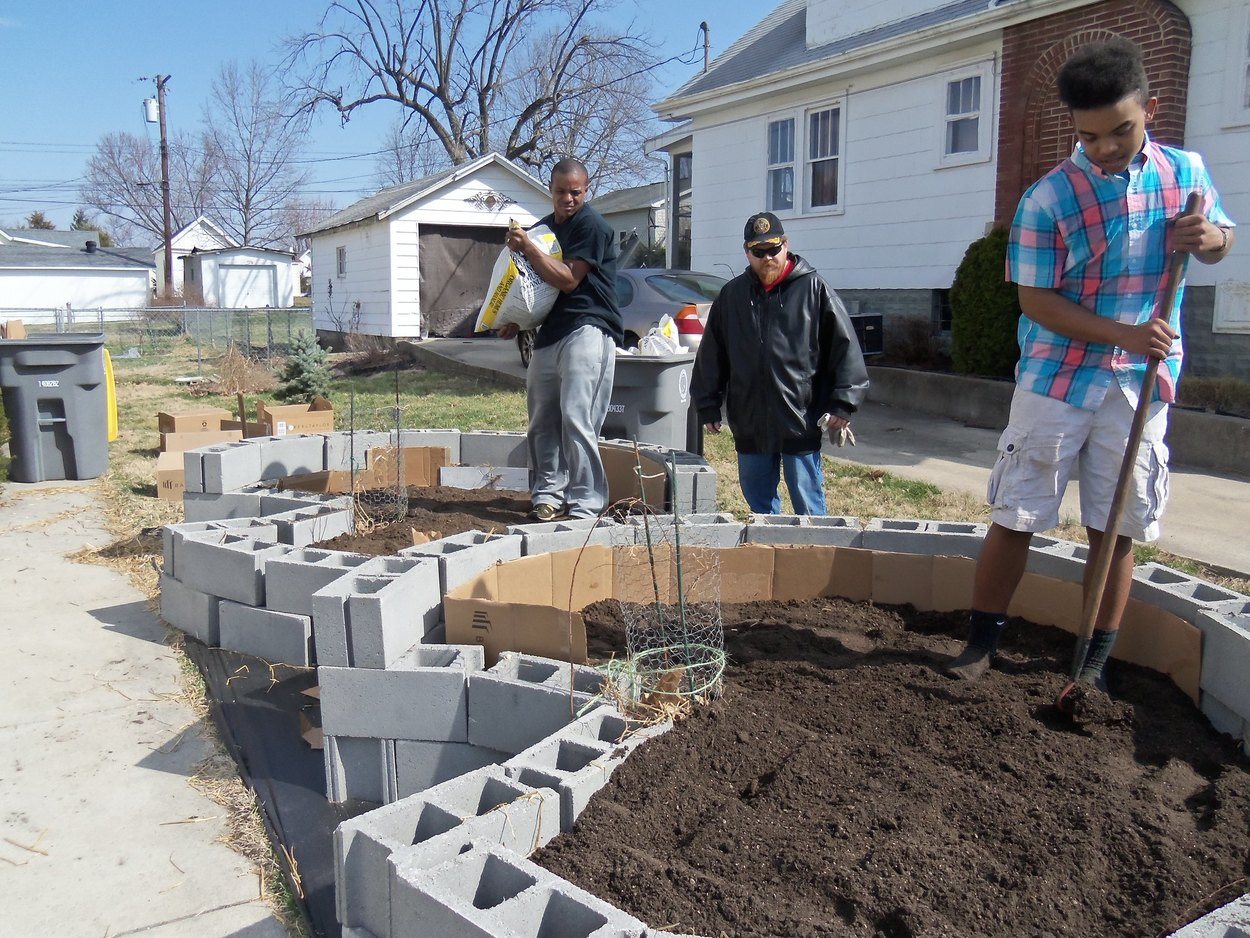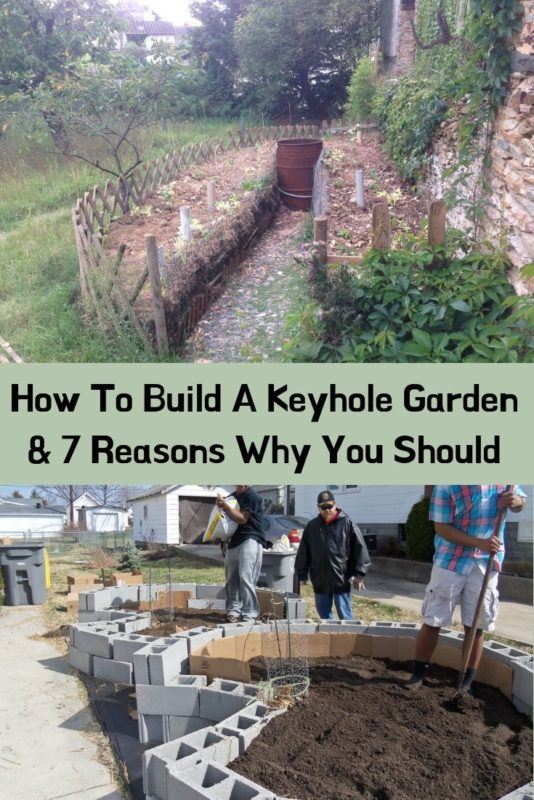Image Credit: VLCinéaste @ Flickr

Keyhole gardens are the ultimate raised bed with a built-in composting system and easy irrigation.
Food and yard scraps are put into the composting basket and as they break down they release plentiful nutrients to the soil.
These garden types originated in Africa where the soil is poor and temperatures are hot and dry.
However, anyone can benefit from the creation of a keyhole garden no matter where you live. This unique garden concept is truly practical in every way.
There are numerous benefits to installing a keyhole garden and the process is not difficult. Numerous crops thrive in keyhole gardens and will reward you with an abundant harvest.
Benefits Of Keyhole Gardening

Here are just some of the reasons why a keyhole garden might be the best choice for you.
1. Soil enrichment
Constructing a keyhole garden takes the painstaking labor out of amending rocky, clayey or otherwise poor soil.
A keyhole garden is constructed using layers of organic material that break down over time, enriching the soil and feeding plants. The central composting basket provides essential nutrients on a steady basis.
2. Moisture retention and water saving
The layers of organic material soak up and retain moisture allowing for less frequent watering.
3. Season extension
The stones of the keyhole wall heat up and absorb the warmth. This makes it a great garden bed for early planting and season extension. Depending on your climate, many people garden using a keyhole layout all year long.
4. Low-cost design
You may have just what you need to create a keyhole garden on your very own property. If not, you can probably find rocks or concrete blocks for free or very low cost.
5. Low maintenance and accessibility
One of the biggest advantages of a keyhole garden is how easily it can be maintained. Everything from watering, feeding to harvesting is easier in a keyhole garden when compared to conventional gardening methods.
Built-up keyhole gardens do not put a strain on your knees and back and beds are perfect for older gardeners or those with physical challenges.
6. Bountiful harvest
The unique design of a keyhole garden allows for you to plant closely and thus, reap a tremendous harvest. Companion planting is often used which also reduces the need to use pesticides. Plants are healthy and fruits are large when you grow in a keyhole garden.
7. Environmentally friendly
Because keyhole gardening envelopes composting into the garden, it reduces the amount of material that finds its way into landfills.
Composting is one of the best ways to utilize what would otherwise be considered trash. Just be sure to follow composting rules closely for best results.
Constructing A Keyhole Garden

Here are the steps to building your very own keyhole garden:
Step one:
Build a circular wall using bricks or stone. You can also use wood if not bricks or stones are available. Make the diameter about six feet and the wall about three feet high.
Step two:
Use mesh wire to make a tube that will be the compost bin. Make the tube about one foot in diameter and four feet high. Place the tube in the center of the circle.
Step three:
Take out a small section of the outer wall and create two walls that run to the compost center in the middle – it should look like a pie with a slice taken out.
Step four:
Place a layer of cardboard, on the bottom of the bed and up the walls. This will keep the soil and other material from spilling out the sides. You can also place newspaper and other compostable material on the bottom at this time.
Add organic matter such as leaves, twigs and grass clippings. Build up the layers by alternating inorganic with organic matter and watering each layer well. Finish with a good layer of compost of high-quality potting soil that slopes down from the compost bin in the center towards the outer wall.
Step five:
Fill the compost tube with food scraps and other compostable material including raw veggies, coffee grounds, eggshells, grass clippings, etc.
Planting The Keyhole Garden
Use the companion planting method to plant your keyhole garden using plants, seeds or a combination of both. Consider planting marigolds closest to the outside wall to help detract insects.
Best Root Crops For Keyhole Beds Include:
- Onions
- Carrots
- Garlic
- Turnips
- Radish
- Beets
Best Leafy Crops For Keyhole Beds Include:
- Spinach
- Herbs
- Lettuces
- Mustard spinach
- Swiss chard
Crops Not Recommended For Keyhole Gardens:
- Peas
- Tomato
- Cabbage
- Peppers
- Eggplant
- Chilies
- Maize
- Beans
- Potatoes
- Squash
- Eggplant
Caring For A Keyhole Garden
As mentioned above, maintenance of a keyhole garden is fairly simple once plants are established. As the material in the bed breaks down, nutrients seep into the garden so there is no need for fertilizer.
Some people top their beds with a layer of mulch to increase the water retention capabilities of this garden type. Water your keyhole garden by watering the compost pile in the middle. The water and nutrients will seep out into the bed.
Add additional compost to the bed as the lower layers decompose. Erect a shade cloth if necessary to keep vegetables from burning.
Take your gardening experience to the next level by creating and caring for a keyhole garden. You will be impressed with how bountiful your harvest will be.
Pin This To Save For Later

